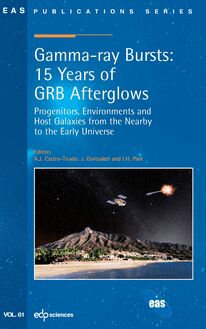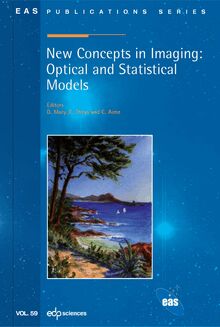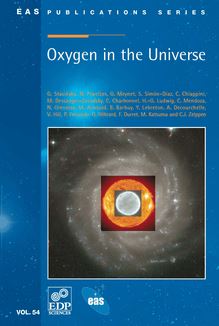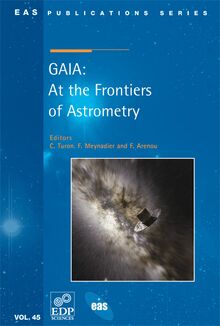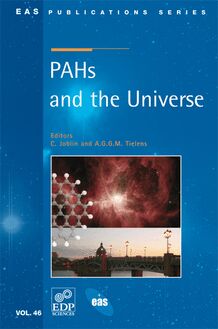PAHs and the Universe , livre ebook
469
pages
English
Ebooks
2011
Obtenez un accès à la bibliothèque pour le consulter en ligne En savoir plus
Découvre YouScribe en t'inscrivant gratuitement
Découvre YouScribe en t'inscrivant gratuitement
469
pages
English
Ebooks
2011
Obtenez un accès à la bibliothèque pour le consulter en ligne En savoir plus
Publié par
Date de parution
01 juillet 2011
Nombre de lectures
1
EAN13
9782759824823
Langue
English
Poids de l'ouvrage
29 Mo
Driven by ground-based, airborne, and IRAS observations, the PAH hypothesis was first formulated in the mid-eighties : the widespreas emission features in the 3-13 µm range are due to UV-pumped, IR fluorescence by large Polycyclic Aromatic Hydrocarbon molecules. These molecules are a ubiquitous component of the insterstellar medium both in local galaxies as well as out to redshifts of ~3 and probably beyond, play an important role in its physical and chemical characteristics, and form a key link between small hydrocarbon species and large carbonaceous grains.
This book gathers contributions that reflect the evolution of the field over the last 25 years, taking advantage of IR space missions - ISO, Spitzer and AKARI - and of dedicated experimental and quantum-chemical studies. We have now reached a stage where we can develop these mid-infrared features as diagnostic tools to study star formation processes, protoplanetary disks as well as galaxy assemblage in the early Universe. The current Herschel/Planck area opens the possibility to better characterize the mid-IR carriers through their contribution to the far-IR and mm emissions. Still, much effort is required before we will fully understand the formation and nature of interstellar PAHs and their role in the Universe. Physical chemists can play an important role in driving this field. This book aims at discussing the state-of-the-art of the PAH hypothesis and to chart the future in this interdisciplinary field. It highlights the various aspects of interstellar PAHs:
- Rich IR spectra of interstellar PAHs
- PAHs and star formation in the near and far Universe
- The lifecycle of PAHs in space
- PAHs in regions of planet formation
- PAHs and carbonaceous grains & Solar system materials.
Publié par
Date de parution
01 juillet 2011
Nombre de lectures
1
EAN13
9782759824823
Langue
English
Poids de l'ouvrage
29 Mo
